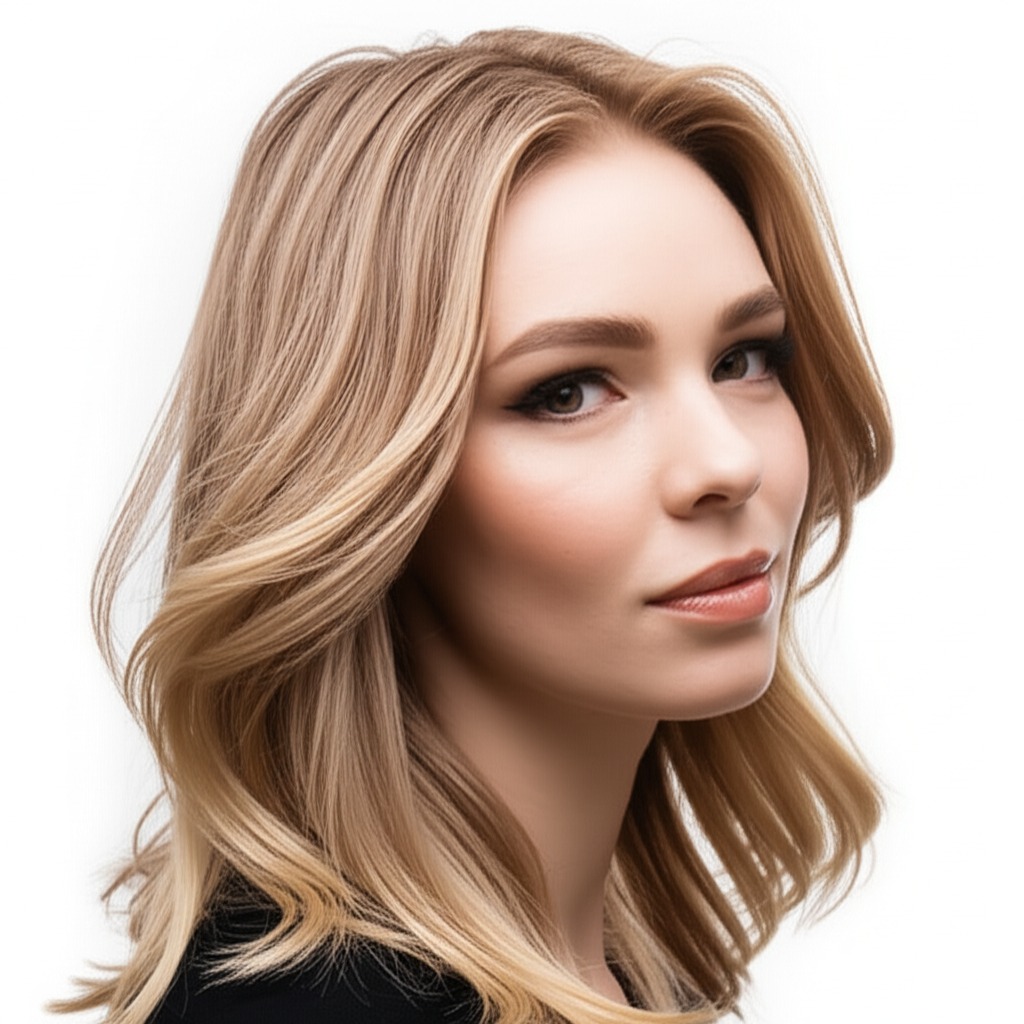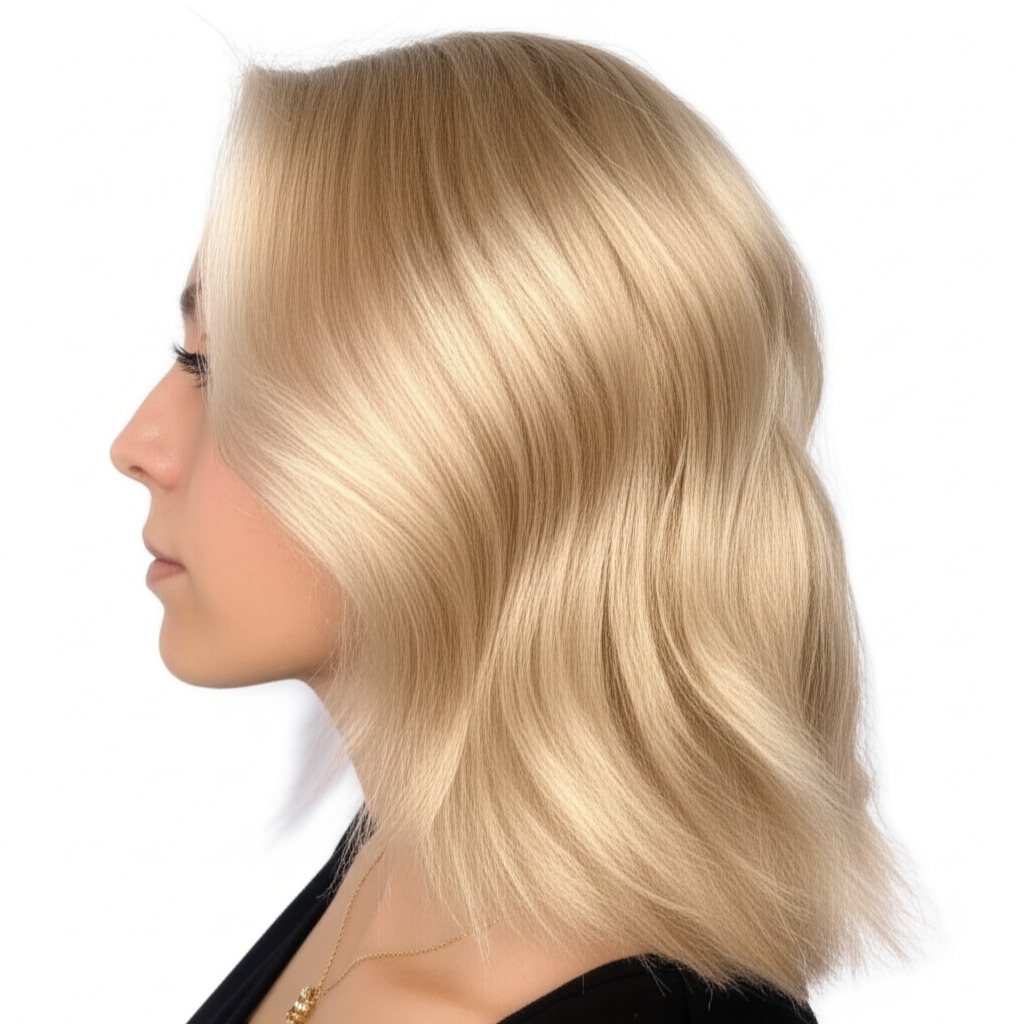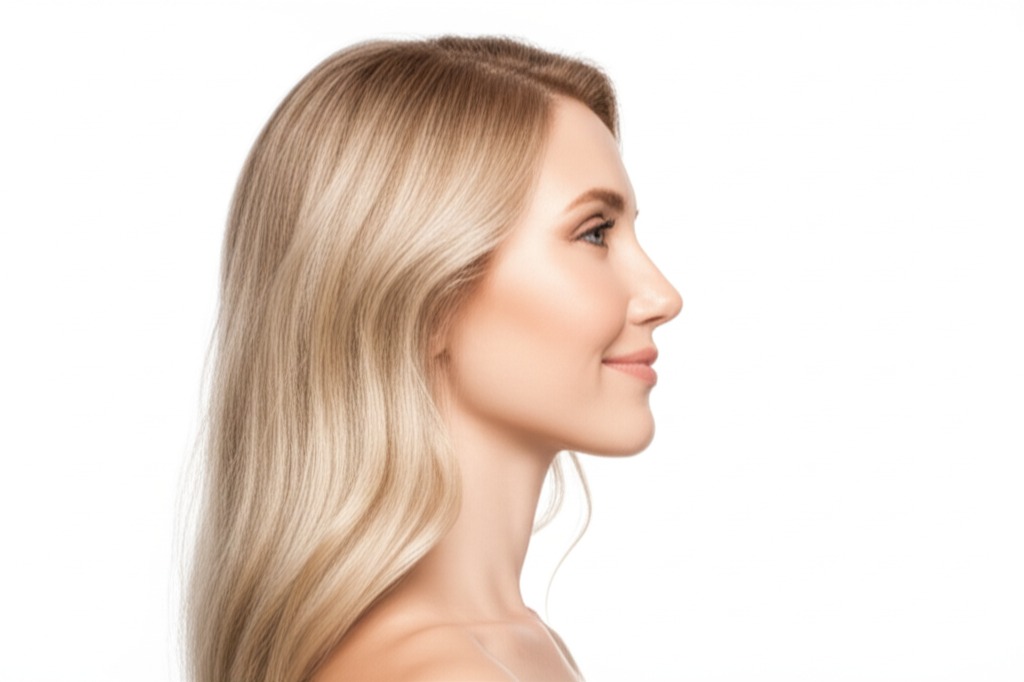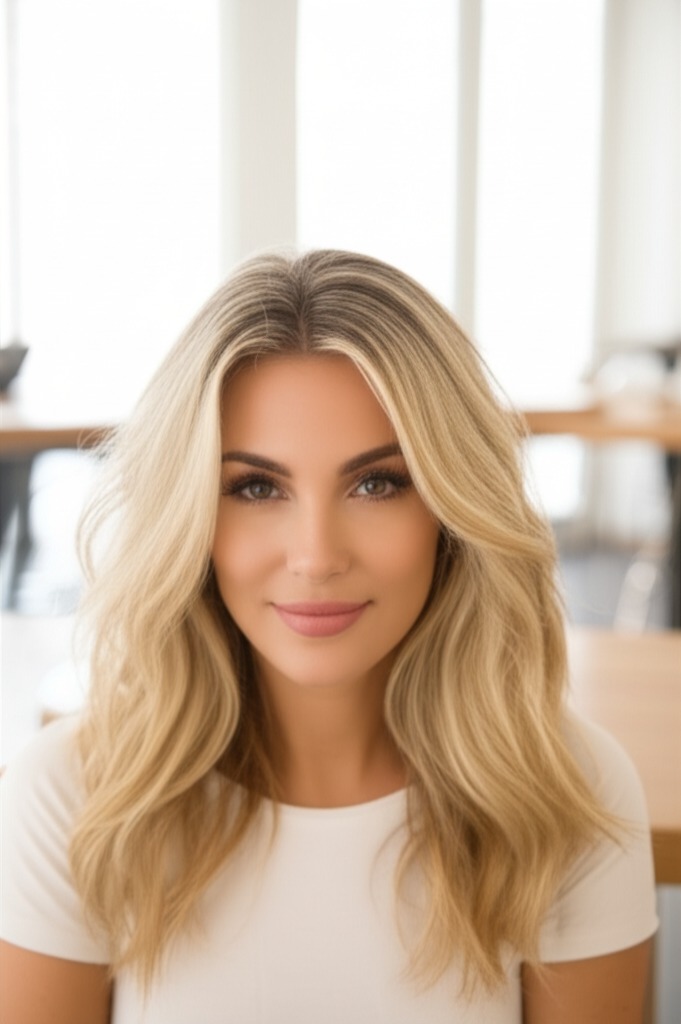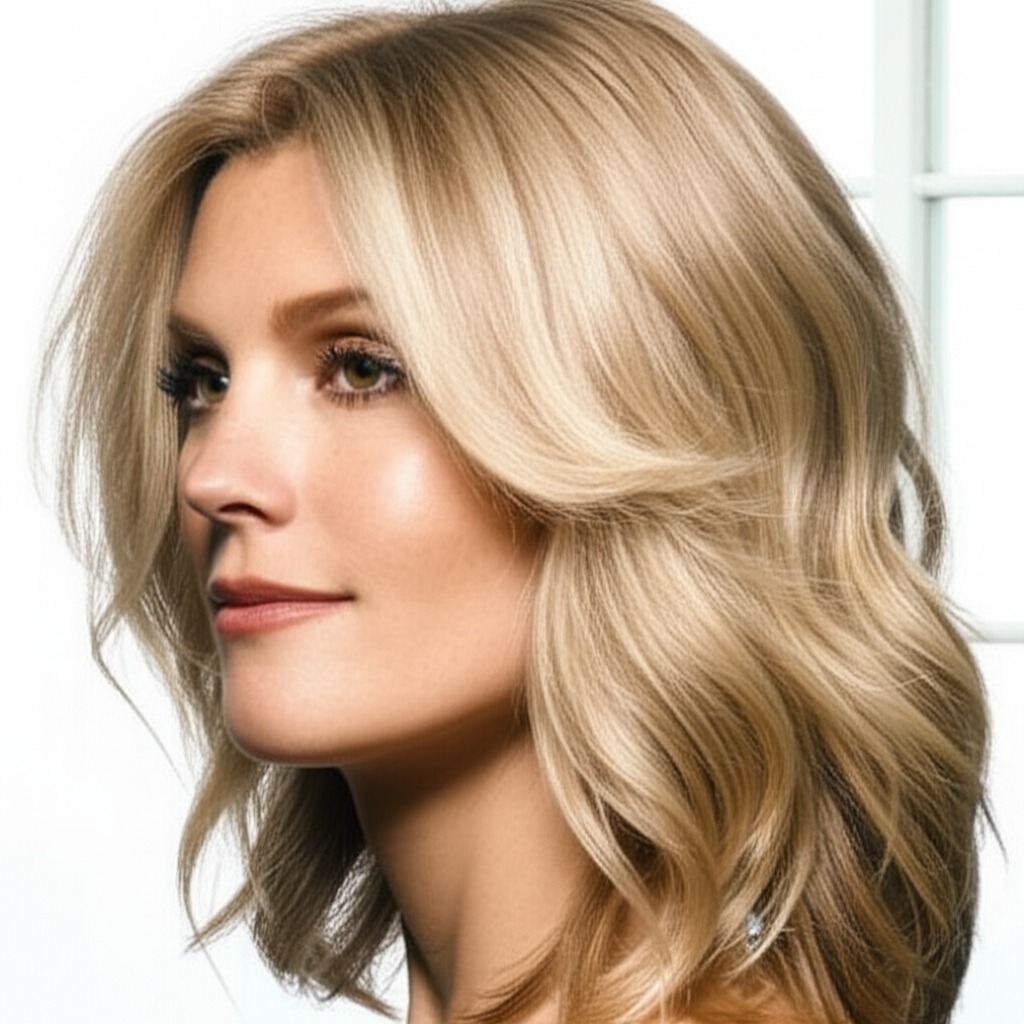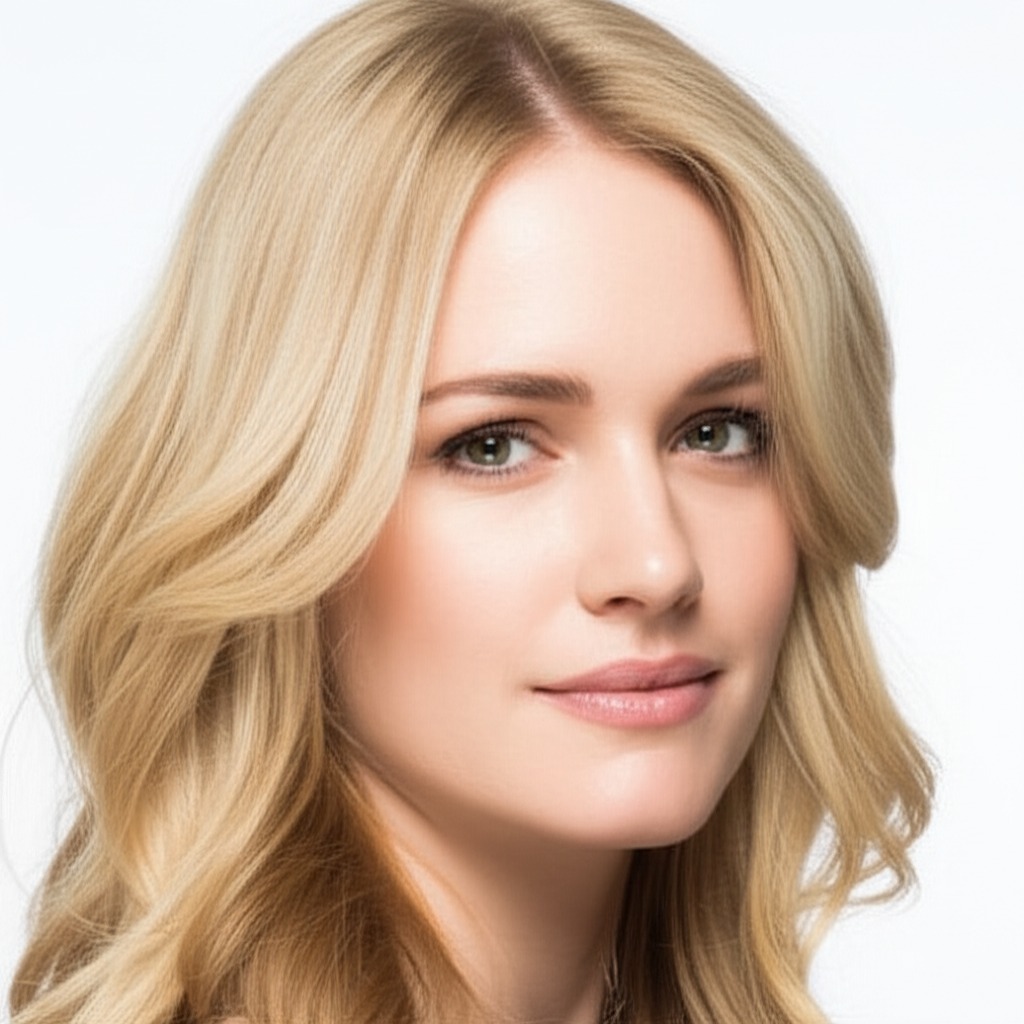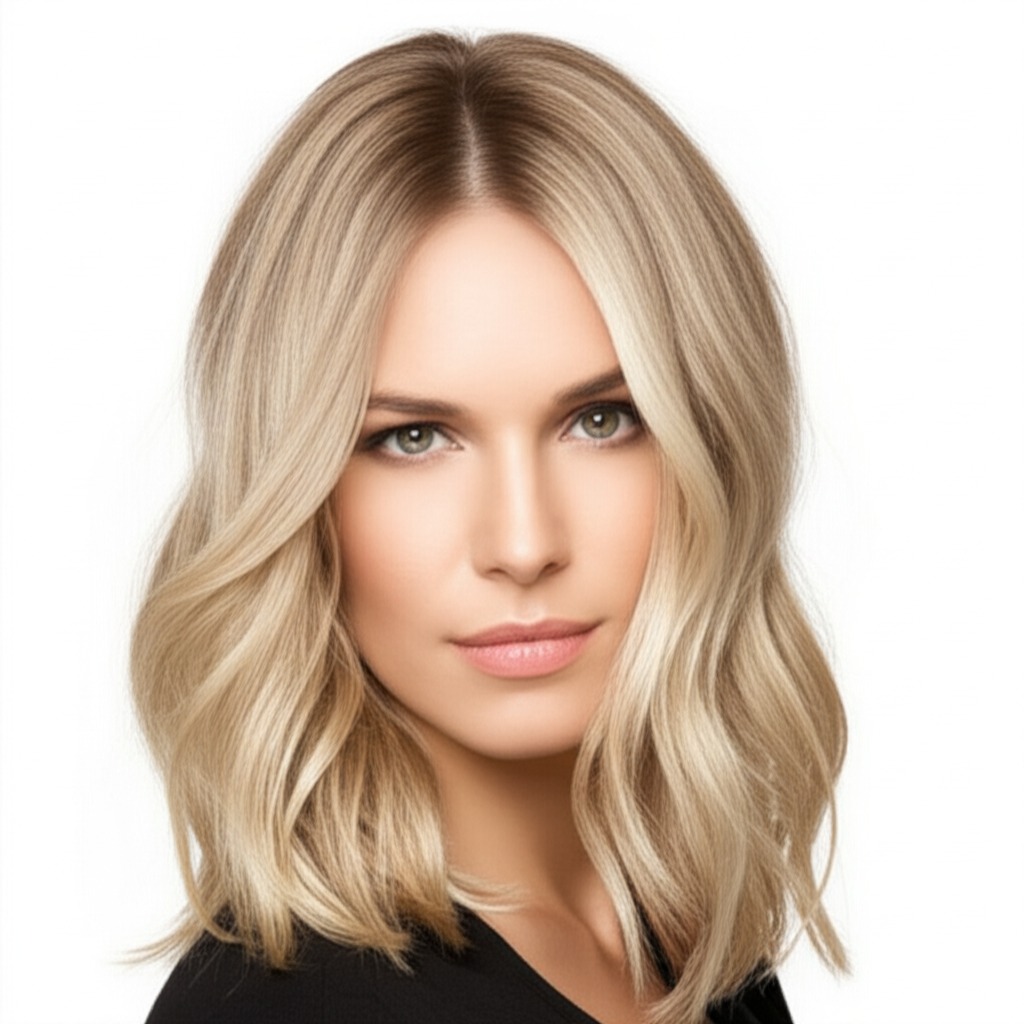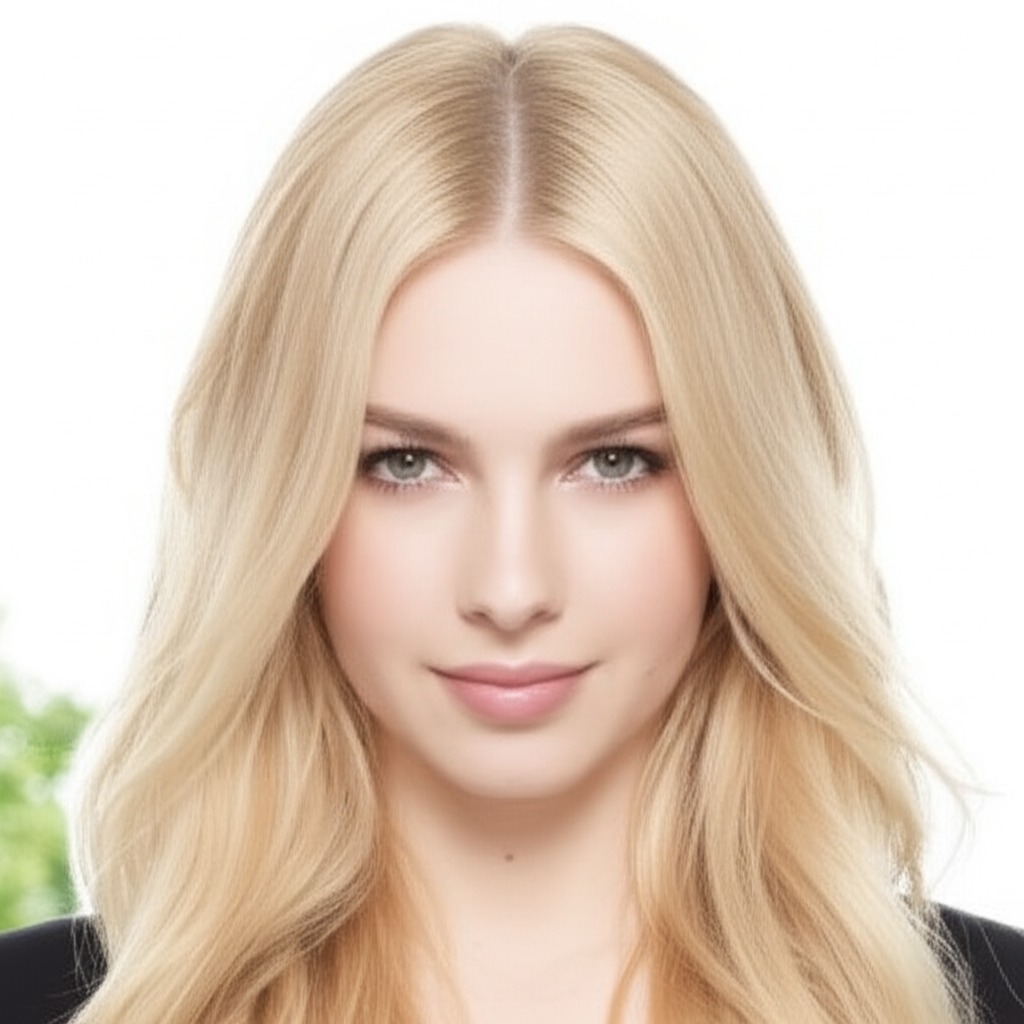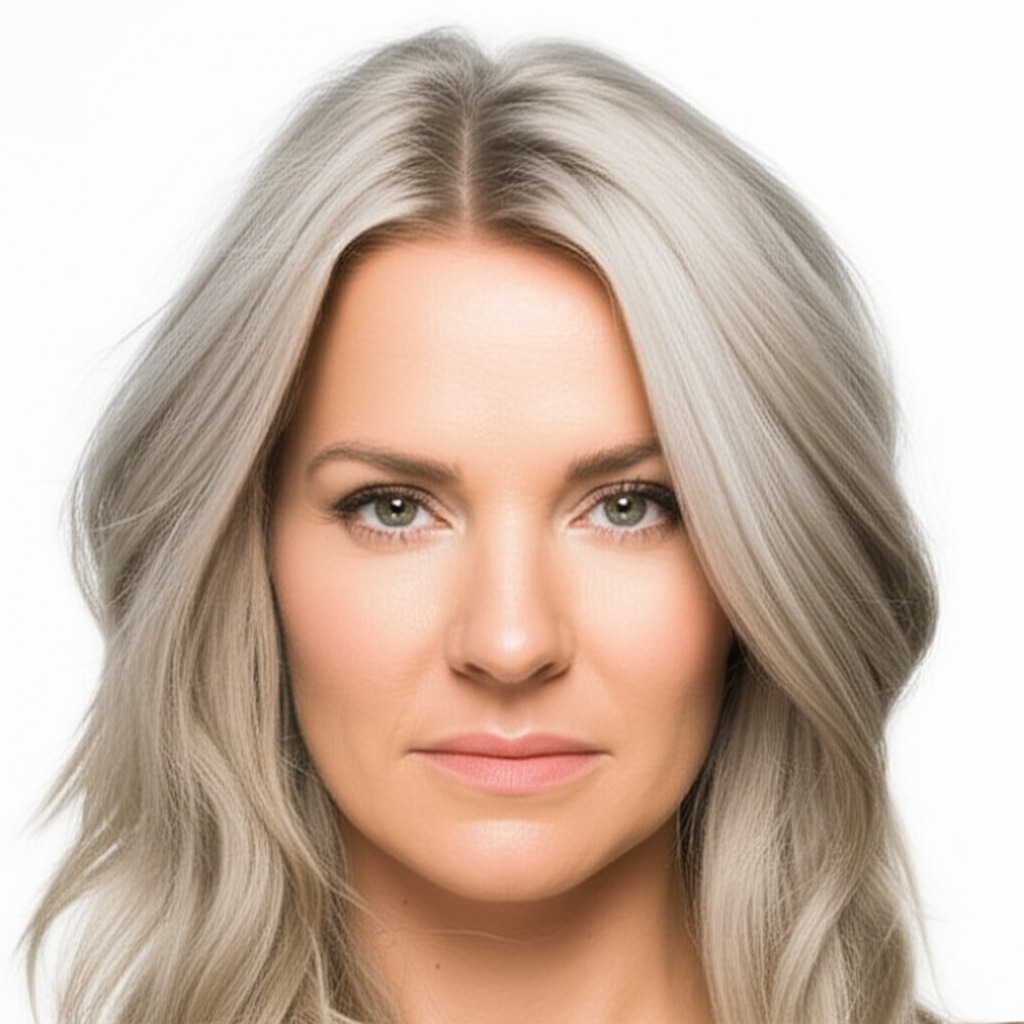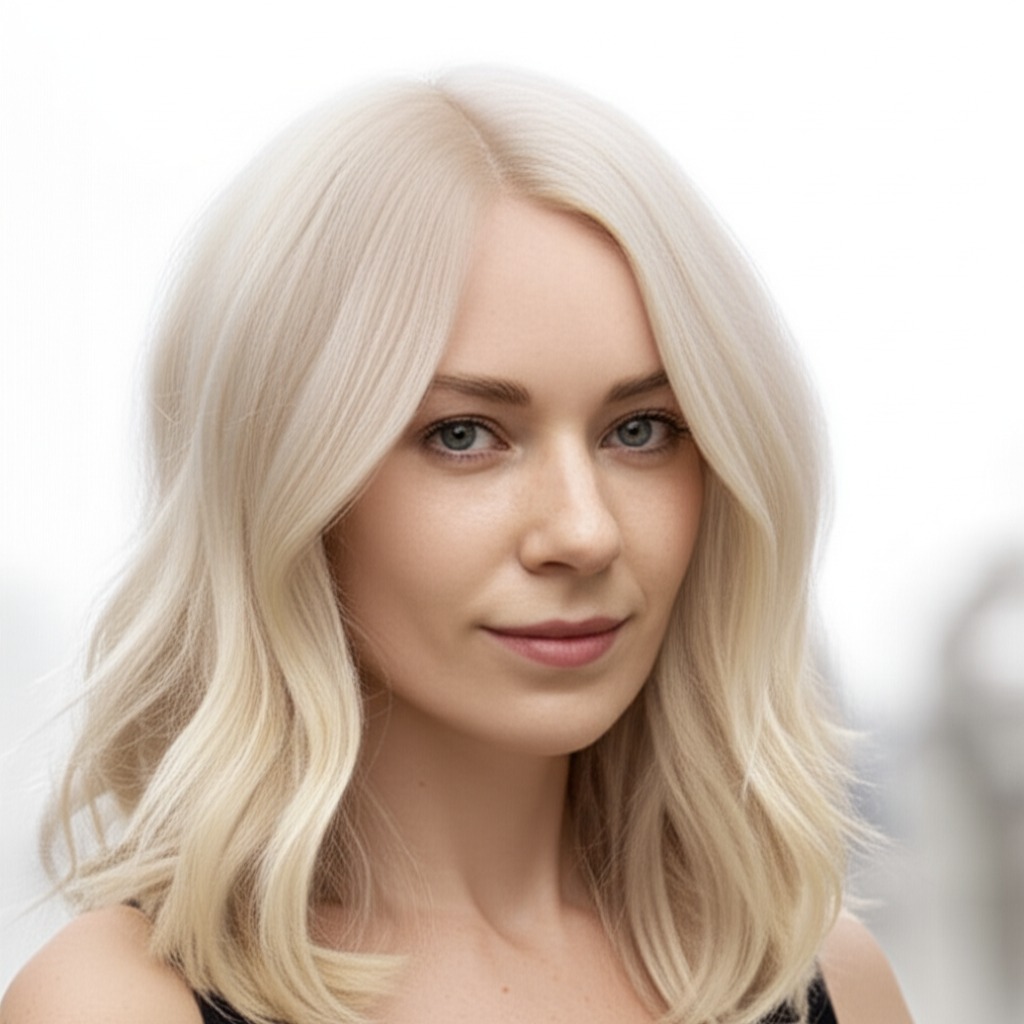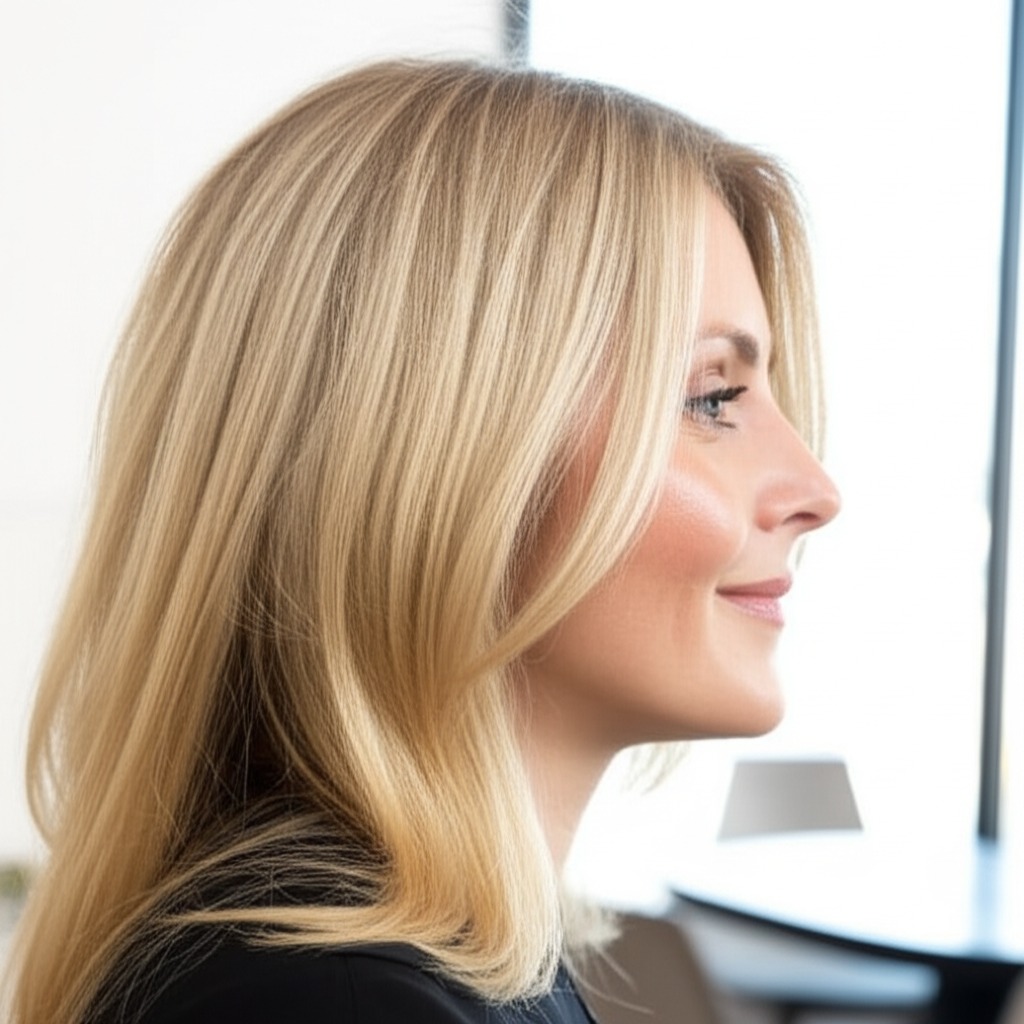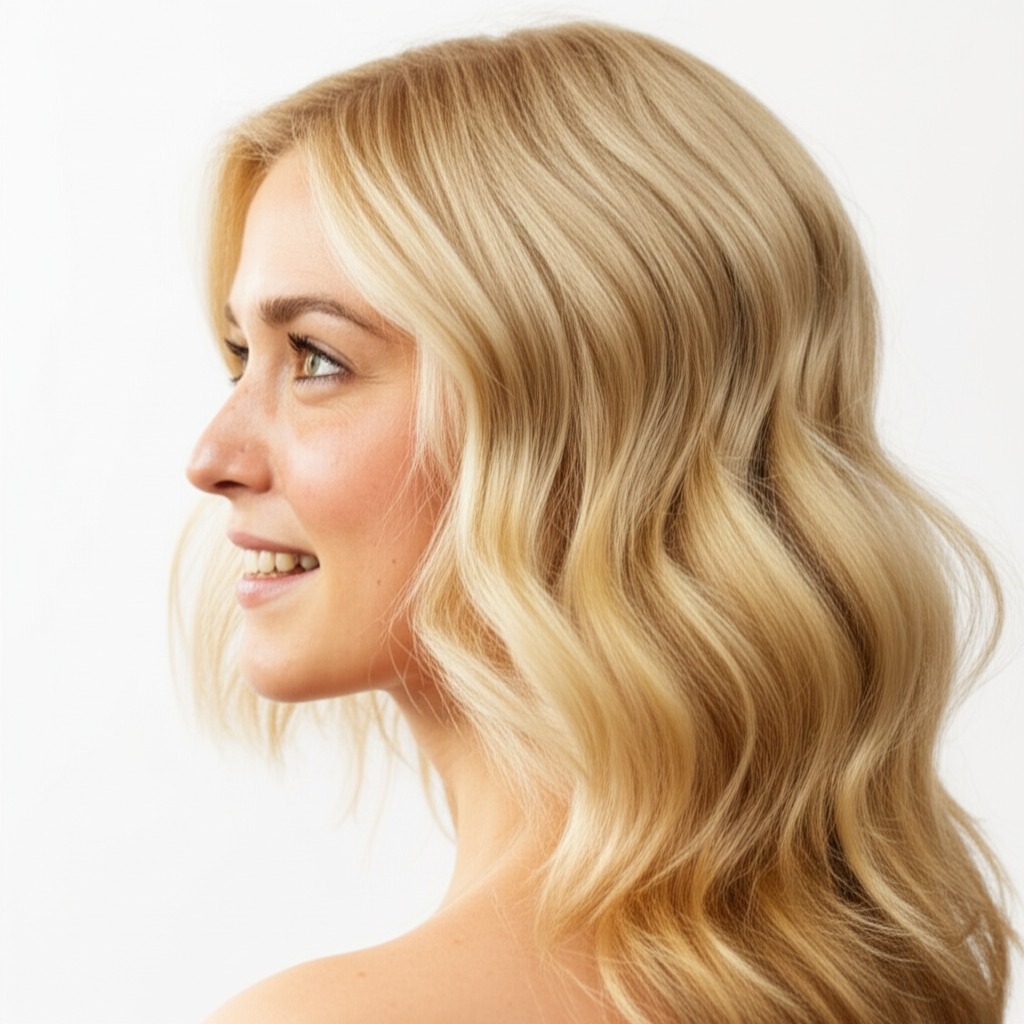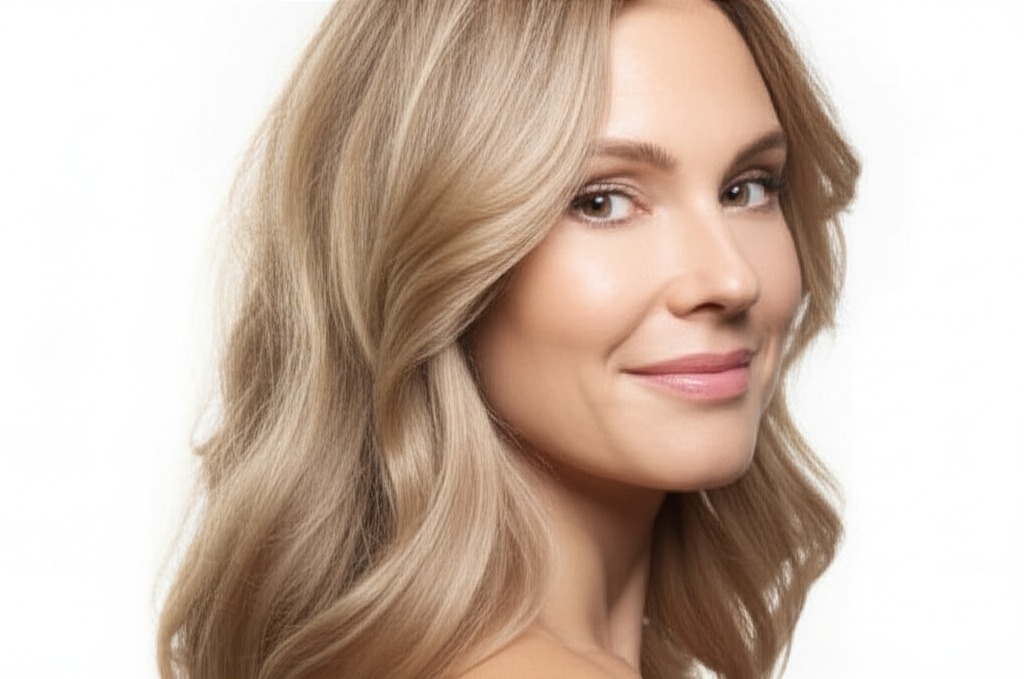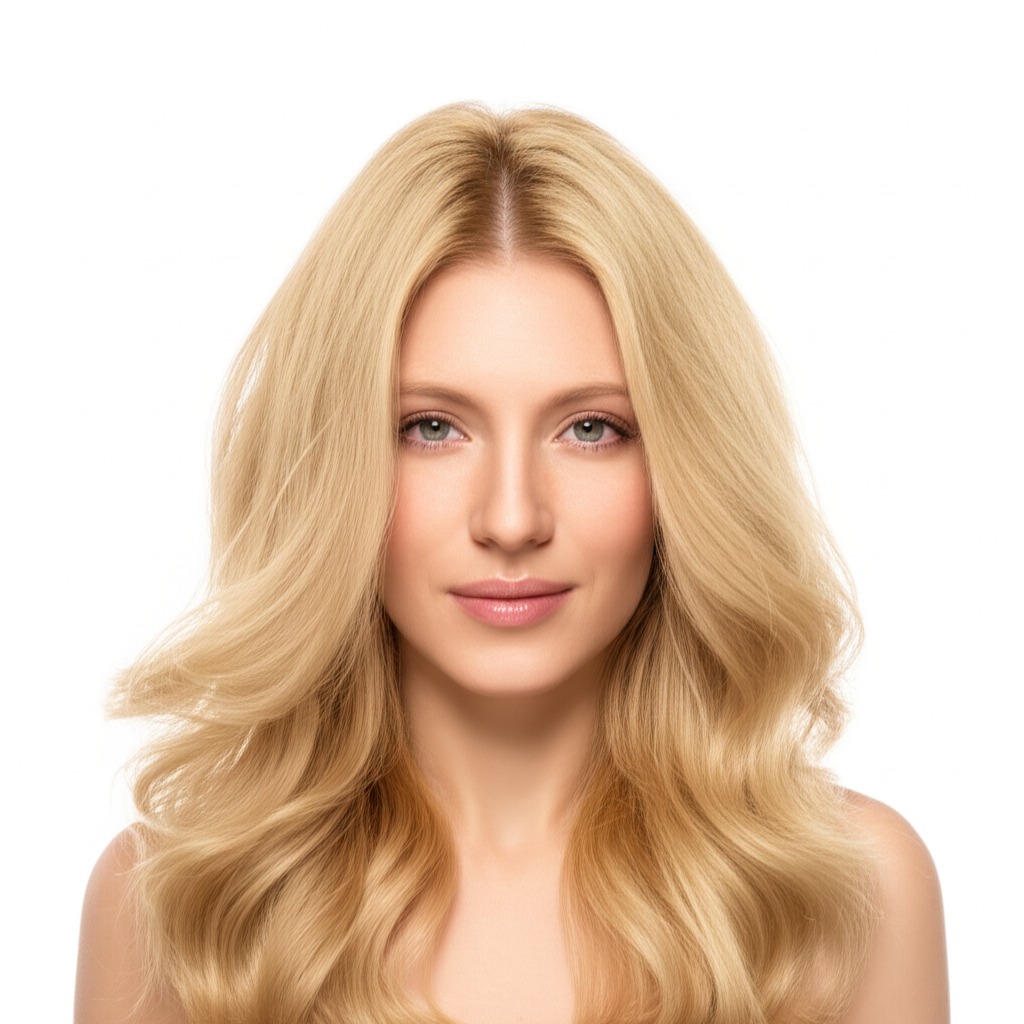#Champagne Blonde: A Guide to Radiant Golden Hair
Champagne blonde is a hugely popular hair color choice – and for good reason! It's luminous, sophisticated, and offers a gorgeous glow. But achieving the right champagne blonde requires understanding its nuances. This guide breaks down everything you need to know, from undertones to at-home care, so you can confidently chat with your stylist or navigate a DIY journey (with caution!).
#1. Understanding Champagne Blonde: Shades & Depth
Champagne blonde isn't just "blonde." It’s defined by its subtle golden warmth and often a slightly muted quality – like the color of fine champagne. Let's break down what that means in terms of hair color terminology:
- Undertone: This is key! Champagne blonde leans warm. Think honey, vanilla, or soft gold rather than icy platinum. While it can have hints of neutrality depending on the specific shade, a cool undertone won’t work – it will look ashy and unnatural.
- Depth (Levels): Hair color levels range from 1 (black) to 10 (lightest blonde). Champagne blonde typically sits between Levels 8-10. The exact level depends on your natural hair color and desired intensity:
- Level 8: A softer, more subtle champagne – great for those with naturally darker bases.
- Level 9: A brighter, more noticeable champagne.
- Level 10: The lightest, most radiant champagne – requires significant lightening and is best suited for lighter starting levels.
#2. Who Does Champagne Blonde Flatter?
While almost anyone can achieve this color with the right technique, certain features make it particularly stunning:
- Skin Tone & Undertone: Champagne blonde shines on people with warm or olive skin tones. If you have a naturally golden complexion, freckles, or tan easily, this color will likely enhance your natural beauty. Those with neutral undertones can also wear it well if the shade is balanced correctly.
- Eye Colors: Champagne blonde complements a wide range of eye colors! Blue eyes pop beautifully against the warmth, as do hazel and green eyes. Brown eyes get an extra dose of sparkle.
- Natural Level Starting Points:
- Levels 1-4 (Dark Brown to Light Brown): Requires significant lightening – expect multiple salon visits and a higher investment in time and money. The darker your base, the more challenging it is to achieve a truly even champagne blonde.
- Levels 5-7 (Medium Blonde/Light Brown): A good starting point! Less lift is needed, so the process will be gentler on your hair.
- Levels 8-10 (Already Light Blonde): The easiest transition! Your stylist can simply tone and refine your existing color to achieve that perfect champagne glow.
#3. Technique Options: Finding the Right Approach
How you get to champagne blonde matters as much as the final shade itself. Here are some common techniques:
- Single-Process: This is a full, even application of color – best for those already close to a level 8 or lighter and wanting a tone refresh.
- Highlights/Lowlights: Adding highlights brightens areas, while lowlights add dimension. Strategic placement can create depth and movement.
- Babylights: Super-fine highlights that mimic the natural sun-kissed look of children's hair – a gentle way to brighten overall color.
- Gloss/Toner: A vital step! Toners deposit pigment onto existing blonde, refining the shade and adding that signature champagne glow. They are often used after lightening.
- Balayage-Effect vs Solid: Balayage creates soft, blended highlights with a more natural grow-out. A solid color application provides an even tone but can require more frequent touch-ups.
#4. Maintenance & Longevity: Planning for the Long Haul
Champagne blonde isn't low maintenance, but it can be manageable with proper care and realistic expectations.
- Wash Frequency: Aim to wash your hair only 2-3 times per week to preserve color vibrancy.
- Toner Refresh: Toners fade quickly! Plan for a toner refresh every 4-8 weeks depending on how fast your hair processes.
- Root Growth Pacing: With lighter shades, root growth is more noticeable. Discuss with your stylist if you want to maintain the all-over color or embrace a softer, rooted look (which requires less frequent salon visits).
- Budget/Time Planning: This color generally falls into the “moderate to high” cost and time commitment category. Expect initial processing to take 2-4 hours, with ongoing touch-ups every few months.
#5. Seasonality & Pairing with Cuts: Styling for Every Occasion
Champagne blonde is versatile enough for any season!
- Cuts:
- Bob/Lob: A sharp bob or lob highlights the color’s brightness and sophistication.
- Long Layers: Layers create movement and dimension, allowing the champagne tones to catch the light beautifully.
- Pixie: A pixie cut can be surprisingly chic with champagne blonde – embrace a playful, edgy vibe!
- Seasonal Tweaks: In winter, slightly warmer tones enhance warmth against paler skin. Summer calls for brighter, more golden shades.
- Occasions:
- Work: A softer, more muted champagne is perfect for professional settings.
- Daytime: Embrace a bright and sunny champagne!
- Evening: Add shimmer spray or gloss to amplify the glow.
- Weddings: Champagne blonde looks stunning in wedding photos – consider adding subtle highlights for extra sparkle.
#6. At-Home Care: Protecting Your Investment
Proper at-home care is crucial to maintaining your champagne blonde’s vibrancy and health.
- Sulfate-Free Shampoo & Conditioner: Sulfates strip color, so opt for gentle, sulfate-free formulas.
- Clarifying Cadence: While sulfates are out, build up can still happen! Use a clarifying shampoo (specifically designed for colored hair) every 4-6 weeks to remove residue.
- Heat Protection: Always use heat protectant spray before using any styling tools.
- Color-Safe Styling Tips: Avoid harsh chemicals and excessive sun exposure. Rinse with cool water to seal the cuticle and lock in color.
- Product Checklist: Sulfate-free shampoo, conditioner, heat protectant, hair mask (for moisture), dry shampoo (to extend washes).
#7. Common Pitfalls & Solutions: Avoiding Color Mishaps
- Brassiness: The biggest concern! Use purple or blue toning shampoos/conditioners to neutralize yellow tones.
- Banding: Uneven color application can create noticeable bands of color. This is often due to improper lightening technique – ensure your stylist uses a foil placement method that distributes the lightener evenly.
- Patchiness: Uneven lift results in patchy areas. A skilled stylist will perform a strand test and assess your hair's porosity before proceeding.
#8. Pros & Cons: Weighing Your Options
Pros:
- Radiant, flattering color.
- Versatile for various cuts and occasions.
- Can brighten skin tone.
Cons:
- Requires significant maintenance (toner refreshes).
- High risk of fading if not cared for properly.
- Can be damaging to hair with frequent lightening (especially from darker bases).
#9. Salon Consultation Script: Setting Expectations
Before committing, have an open and honest conversation with your stylist! Here are some prompts:
- "I'm interested in champagne blonde – can you assess my hair’s condition and determine if it's achievable?"
- “What level of lift do I need to achieve the desired shade?”
- "How many salon visits will be required initially, and what is the estimated cost?"
- "Can we discuss a plan for root maintenance and toner refreshes?"
- “I’m concerned about brassiness – how can we prevent it?”
- "What at-home care products do you recommend?"
#10. FAQs: Your Burning Questions Answered
- Is champagne blonde damaging to my hair? Lightening always causes some degree of damage, but a skilled stylist will minimize it with proper techniques and gentle products.
- Can I achieve champagne blonde at home? While possible for those already light-haired, attempting this color on darker hair at home is risky and can lead to unpredictable results.
- How long does champagne blonde last? The toner fades quickly (4-8 weeks), while the overall lightness requires touch-ups every 6-12 weeks depending on your natural base and growth rate.
- What if my hair turns orange/brassy after lightening? Use a purple shampoo or conditioner to neutralize brassy tones. A blue-based toner can also help.
- Can I go from black box dye to champagne blonde? It's possible, but requires multiple sessions and significant commitment due to the need for color removal.
- Will champagne blonde make my hair look flat? Not if it’s properly executed! Highlights or balayage can add dimension and movement.
By understanding these nuances and working closely with a skilled stylist, you can achieve your dream champagne blonde – a radiant, sophisticated hue that will leave you feeling confident and beautiful!
